#Minister of Textiles
Explore tagged Tumblr posts
Text
Union Minister of Textiles Shri Giriraj Singh inaugurates the new campus of Indian Institute of Handloom Technology at Fulia, Nadia, West Bengal


Shri Giriraj Singh in his inaugural address highlighted the contribution of different schemes of Textile ministry for the ‘Vikas & Pragati’ of handloom weavers. The Minister dedicated this institute with world-class infrastructure to West Bengal and declared the increase of intake for first-year admission into this institute from the existing 33 to 66. The children of handloom weavers will get the opportunity to study in this institute and serve the handloom industry of West Bengal, Bihar, Jharkhand & Sikkim.
Hon’ble Minister highlighted that IIHT Fulia will contribute significantly to the textile value chain by using Flax and linen as raw materials and using design inputs from NIFT, Kolkata. The Union Minister also highlighted the legacy of handloom weaving of West Bengal and said that our handloom products were having more demand than the cloth produced in Manchester before the industrial revolution. The fineness of the hand-woven fabrics of Bengal was as such that a saree can be passed through a small ring.
The Union Minister has also highlighted that the textile ministry is committed to reach the market size of 300 billion dollars in the year 2030 and provide employment to 6 crore persons in the textile value chain.
The minister stated that this IIHT building is not just a building but it is a platform from where the handloom weavers’ children can fulfill their dreams. By making the students highly skilled, the handloom craft will be made sustainable and it will give the handloom sector global recognition. The confluence of simplicity, tradition, and technology is a joint step towards making ‘Atma Nirbhar Bharat’
The occasion was graced by the presence of Shri Suvendu Adhikari, MLA & Hon’ble Leader of Opposition, West Bengal, Shri Jagannath Sarkar, Hon’ble Member of Parliament, Ranaghat constituency, Shri. Bankim Chandra Ghosh, Hon’ble MLA, Chakdaha, Shri. Ashim Biswas, Hon’ble MLA, RanaghatNorth East, Shri. Ashis Kumar Biswas, Hon’ble MLA, Krishnaganj & Dr. M.Beena, IAS, Development Commissioner for Handlooms, Ministry of Textiles, Govt. of India.
Source - PIB INDIA
0 notes
Text
"Polish presidency of the EU Council announced breakthrough in early hours after marathon overnight talks on food waste reduction targets and measures to limit a throwaway clothing culture.
The EU has set its first ever legally binding targets for member states to cut food waste, with lawmakers agreeing on a 30% cut across retailers, restaurants, caterers and households by the end of the decade.
For food processors and manufacturers, the 2030 goal is a 10% reduction, with both targets based on the average in the three years to 2023. EU estimates suggest that over 59 million tonnes of food is shovelled into dustbins every year, representing a loss of €132 billion.
Reforms to the EU’s waste framework directive, agreed this morning [February 19, 2025] after a marathon negotiating session behind closed doors between MEPs and government delegates, also target the textiles industry.
New harmonised rules on extended producer responsibility (EPR) mean textile producers and fashion brands will have to pay a fee to help fund waste collection, sorting and recycling, based on how circular and sustainable their products are.
In a measure directly targeting ‘fast fashion’ practices such as cheap, almost disposable clothes from online platforms, EU governments are also empowered to adapt these fees based on the durability of garments.
“The rapidly growing e-commerce market brings many opportunities, but also represents a significant challenge, especially in terms of environmental protection,” the agreed text runs.
The legislation gives leeway to penalise aggressive marketing strategies that encourage clothes to be discarded before they are worn out, practices that according to the legislation are “likely resulting in an overconsumption of textile products and, consequently, an overgeneration of waste”.
Criteria that can be considered include the width of the product range offered by a retailer, and the provision or lack of a repair services and incentives.
Anti-waste campaigners welcomed EU action, but were disappointed by the level of ambition reflected in the headline targets.
“The EU and its member states committed to the UN Sustainable Development Goals 10 years ago, including a 50% reduction of food waste across the entire supply chain,” said Theresa Mörsen, a policy officer at the Brussels-based NGO Zero Waste Europe...
The agreement is provisional, subject to a rubber stamp from government ministers at an EU Council summit – a procedure which is normally a formality."
-via EuroNews, February 19, 2025
#fast fashion#food waste#food production#europe#eu#european union#waste#circular economy#textiles#fashion#fashion news#good news#hope
981 notes
·
View notes
Text
Occupations Signified by each Planet 👩🏻💻💼💰💸
Sun: Politics, entertainers, military and army commanders, directors, Government officials, public servants, ministers, Prime Ministers, Presidents, Governors.
Moon: Nursing, babysitters, chefs, coast guard, navy, real estate agents, kindergarten teachers, import export, restaurants, clothing, grocery shop.
Mars: Dentist, surgeon, butcher, real estate builders, mechanical/civil engineers, cooks, bodyguards, army, military, airforce, chemists, mechanics, hair cutters, fabrication, marital arts, firefighters, masseuses.
Mercury: Accountants, bookkeepers, data analyst, all types of data work, teachers (especially school), consultants, writers, businessmen, traders, astrologers, speech therapist, language translators, bankers, media personnel, journalist, social media manager, mathematicians, computer operators, customer support, lawyers, coders, programmers, minister.
Jupiter: Lawyers, judge, priest, mentors, advisors, coach, sports coaches, teachers, professors (college level), financial consultants, legal counsel, travel agent, preachers, spiritual teachers, Gurus.
Venus: Artist, movie stars, celebrity, musicians, dancers, singers, jewelers, luxury car dealers, sweet shops, marriage counselor, interior designers, fashion designers, textiles, perfume dealers, air hostess, sex workers, makeup artist, brokers, painters, designers, holiday or vacation agents, ambassadors.
Saturn: Manual jobs, masonry, carpenter, iron or steel worker, geologist, servants, oil and gas worker, executioner, mortician, social service, gardener.
Rahu: Technology, programmers, scientist, nuclear management, toxic chemicals, anesthesia, visa agents, advertising, online jobs, online marketing, drug specialists, alcolol dealers, smartphone service.
Ketu: Astrologers, psychics, monks, nuns, medical workers, doctors, pin hole surgeons, charity, social service, mathematicians, clock and watch makers, black magicians.
For Readings DM
#astrology#astrology observations#zodiac#zodiac signs#astro community#astro observations#vedic astrology#astro notes#vedic astro notes#astrology community#career astrology#10th house
893 notes
·
View notes
Text
Medieval-Fantasy Type Jobs List: 2025 Edition
This is a re-upload of my previous list from 2018, this time updated with even more jobs, roles, and titles for aspiring fantasy writers to give their characters. Enjoy!
Abbot; Abbess
Academic/Professor (history, science, economics)
Acolyte
Acrobat
Actor; Actress
Admiral
Adventurer
Adviser (royal, military)
Aegis (Royal Protector)
Alchemist
Alienist (legal psychiatrist)
Almoner (Alms for the poor?)
Ambassador
Animal trainer (dogs, falcons, horses)
Antiquarian
Apothecary
Apprentice
Arbalest (crossbowman)
Arcanist (studies magic)
Archer
Architect
Armorer/Armorsmith
Artificer (technician)
Artist
Assassin
Astrologer
Astronomer
Auctioneer
Author, Nonfiction
Bachelor; Bachelorette
Bailiff
Baker; Baxter
Bandit/Brigand
Banker
Barbarian
Barber
Bard
Barkeep/Bartender
Baron; Baroness
Bathhouse Attendant
Beast Tamer/Master
Beekeeper
Beggar
Berserker
Bishop
Blacksmith
Bladesmith
Bodyguard
Bookbinder
Bounty Hunter
Boxer (fisticuffs)
Brawler
Brewer; Brewster (ale/beer)
Broker
Butcher
Butler
Cabin Boy
Candlemaker
Captain
Caravaneer
Cardinal
Caregiver
Caretaker
Carpenter
Carriage Driver
Carter/Carrier (Medieval truck driver)
Cataphract (armored heavy cavalry)
Chainsmith
Chamberlain (lord’s principal assistant)
Champion
Chancellor
Chandler (candle seller)
Chaplain
Chariot Racer
Cheesemaker
Chemist
Chieftain
Chimneysweep
City Guard/Guardsman
Clergyman
Cleric
Clerk
Cobbler (mends shoes)
Collector
Commander
Commissary
Commodore
Confectioner (Sweet Maker/Chocolatier)
Confessor
Confidant
Consort
Constable; Marshal
Convict
Cook; Pastry Chef
Cooper (barrels/buckets)
Copyist/Scribe
Cordwainer (Shoemaker)
Councilor
Count; Countess
Courier
Crusader
Cultist
Curate (parish assistant clergyman)
Curator
Dancer
Dandy (fancy-dressed individual)
Deacon
Dentist
Deprived
Detective
Diplomat
Diva
Dockworker
Doctor/Physician
Domestic Servants (laundry, kitchen, cleaning)
Dragonrider
Dressmaker
Druid
Drunkard
Duelist
Duke; Duchess
Dyer
Ealdorman (high-ranking village head)
Embroiderer
Emissary
Emperor; Empress
Enchanter
Enforcer of Laws against Rich Clothes
Engineer (Textile, Mechanical, Experimental, Siege)
Escapist
Executioner
Explorer
Falconer
Fanatic
Farmer/Farmhand
Farrier (horse Shoes)
Fighter (Gladiator/Arena/Pit)
Fisherman
Fishmonger
Flagellant
Fletcher (crafts arrows)
Florist
Footman
Foreman
Fortune Teller
Foundryman
Friar
Furniture Maker
Gardener
Gatekeeper
General
Glazier (glass maker)
Gong Farmer (latrine attendant)
Governor
Grave Robber
Gravedigger
Grocer
Guardian
Guru
Hack Driver
Halberdier
Harbinger
Harbormaster
Hatter
Hay Seller
Headsman; Hangman
Healer; Midwife
Hellion
Herald
Herbalist
Hermit
Hero
Hierophant
Highwayman
Horologist (Clock/Watch maker)
Houndmaster
Housekeeper
Housewife/husband
Hunter
Idol
Illuminator
Illusionist
Importer; Exporter
Innkeeper
Inquisitor
Inspector
Interpreter
Inventor (potions, weapons, science)
Investigator
Jailer
Jarl
Jester/Fool
Jeweler
Judge/Justiciar
King/Monarch
Knife Thrower
Knight
Laborer
Lady-in-Waiting
Lawyer
Leper
Linguist
Locksmith
Logger/Lumberjack
Lookout
Lord Protector
Lord/Lady (Royal Title)
Loremaster
Maestro
Mage
Magician (performer)
Magistrate
Maid
Maiden
Majordomo
Man-at-Arms
Mapmaker (Cartographer)
Marauder
Mason
Master of Ceremonies
Master of Horse/Stablemaster
Master-at-Arms
Mayor
Medic
Medium
Mendicant
Mercenary/Sellsword
Merchant (cloth, jewels, food, building materials)
Messenger
Miller
Miner
Minister
Minstrel; Jongleur
Mistress
Money Changer
Monk, Nun
Musician (military, entertainer)
Navigator
Necromancer
Nobleman/woman
Nomad
Nurse
Nursemaid/Wetnurse
Occultist
Official
Oracle
Orator (public speaker)
Outcast
Outlander
Outlaw
Outsider
Page
Painter
Paladin
Papermaker
Paramour
Parchment and Ink Seller
Pardoner (scam artist)
Pariah
Parson
Peasant
Peddler
Philosopher
Pilgrim
Pirate
Playwright
Plunderer
Poacher
Poet; Literary Author
Polymath (Knower of Everything)
Pontiff/Pope
Porter
Potioneer
Potter
Praetor
Preacher
Priest; Priestess
Prince; Princess
Prisoner (hard labor)
Produce Vendor
Prophet; Prophetess
Prostitute/Concubine; Courtesan
Provost
Pyromancer
Quartermaster
Queen
Raider
Ranger
Rat Catcher
Rebel
Recluse
Record Keeper
Recruit
Regent
Researcher
Ringmaster
Rogue
Ropemaker
Royal Huntsman
Saboteur
Saddler (Yo mama!)
Safecracker
Sage
Sailor
Salt Seller
Salter or Daysalter (makes/sells salt)
Scholar
Schoolmaster; Teacher
Scout
Sculptor
Sentinel
Seraph
Serf
Shaman
Sheriff
Shieldmaiden
Shipwright
Shopowner
Skald
Slave Trader/Catcher
Slave/Thrall
Smelter
Smith (Gold/Silver)
Smuggler
Sniper
Soldier
Sorcerer/Sorceress
Spell Caster
Spellblade
Spinster; Spinner (yarn/thread)
Spy
Squire
Stablehand
Stained-Glass Artist
Steward
Stoker
Stonemason
Storyteller
Stranger
Street Cleaner
Street Performer
Strongman/woman
Summoner (law officer)
Surgeon
Swashbuckler
Tailor
Tanner (leather)
Taxman/Tax Collector
Templar
Thane
Thatcher (thatched roofs)
Thief (burglar, pick-pocket, mugger)
Thug
Torturer
Town Crier (Hear ye! Hear ye!)
Toymaker
Tracker
Trader
Trapper (traps animals)
Traveler
Treasure Hunter
Trickster
Troubadour
Tutor
Undertaker
Vagabond
Vagrant
Valet (body servant)
Vestal
Veteran
Vicar
Viceroy (monarchy representative)
Viking
Viscount; Viscountess
Vizier
Wagoneer
Walker or Fuller
Wanderer
Ward
Warden
Warlock; Witch
Warlord
Warrior
Watchman
Weapons Instructor
Weaver; Webster (fabric, rugs, baskets)
Wheelwright (makes wheels)
Wisewoman/man
Witch Doctor
Witch Hunter
Wizard
Wood-carver
Wool-carder
Wrestler
Writer
Yeoman
Zealot
Zoologist
#worldbuilding#world building#world building tips#writing tips#writing advice#fiction writing#character development#character tips#fantasy#writing#fantasy writing#novel writing#story writing#creative writing#fantasy worldbuilding#fantasy world
36 notes
·
View notes
Text

“House of Life” Among New Discoveries at the Ramesseum Temple in Luxor
An Egyptian-French archaeological mission has made a series of highly significant discoveries at the Ramesseum temple (commissioned by Ramses II), located on the western bank of Luxor, Egypt. The discoveries, the result of cooperation between the Conservation and Documentation Sector of the Supreme Council of Antiquities, the French National Center for Research, and the Sorbonne University, have brought to light new elements that allow for a deeper understanding of the history and function of this iconic temple.
Among the main findings are a series of tombs from the Third Intermediate Period, storerooms for olive oil, honey, and fats, as well as wine cellars. Additionally, textile and stone workshops have been identified, along with kitchens and bakeries. These elements point to a much more complex economic and administrative activity than previously documented.
One of the most remarkable discoveries has been that of the so-called House of Life, an educational institution attached to the temple. This find is exceptional not only for providing the architectural layout of this teaching center, but also for yielding a collection of archaeological objects related to educational activity, such as remains of drawings and school games. This is the first physical evidence of the existence of a school within the Ramesseum, also known as the Temple of Millions of Years.

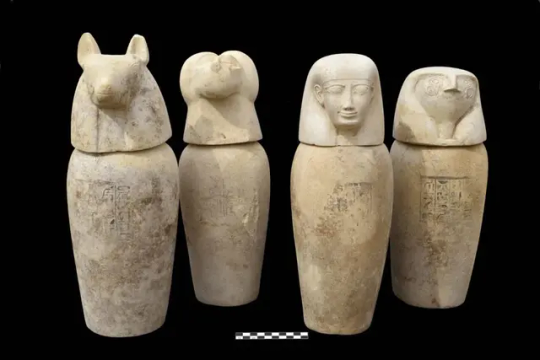
In the eastern sector of the temple, structures were found that, according to archaeologists, would have functioned as administrative offices. Meanwhile, studies carried out on the buildings and storerooms in the northern part indicate that olive oil, honey, and fats were stored there. A large number of wine jar labels were also found, confirming the use of the area as a wine cellar.
In the northeastern area of the temple, numerous tombs from the Third Intermediate Period were discovered. These contain funerary chambers, burial shafts with canopic jars, well-preserved funerary objects, nested sarcophagi, and a total of 401 ushabti figurines carved in ceramic. Human bones were also found scattered in the area.
The Minister of Tourism and Antiquities, Sharif Fathi, praised the mission’s efforts to reveal new aspects of the religious and social role of the Ramesseum in ancient Egypt. For his part, the secretary general of the Supreme Council of Antiquities, Mohamed Ismail, emphasized the importance of these discoveries, as they provide key information about the temple’s complex history, founded during the New Kingdom, under the reign of the Ramesside pharaohs.

Ismail explained that the temple not only served as a place of worship, where rituals in honor of the pharaoh were carried out even during his lifetime, but also fulfilled administrative and economic functions. The new evidence points to the existence of a complete hierarchy of civil officials who managed the redistribution of stored or manufactured goods, which benefited the local community, including the artisans of Deir el-Medina under the control of royal authority.
The studies also confirm that the site was already occupied before Ramses II built the temple, and that it was later reused as a large priestly necropolis after being looted. In later periods, during the Ptolemaic and Roman periods, it was used by stonecutters.
The head of the mission on the Egyptian side, Hisham El-Leithy, announced the re-exploration of the tomb of “Sehetep-ib-Re,” located in the northwestern sector of the temple. This tomb, originally discovered in 1896 by British archaeologist Quibell, dates from the Middle Kingdom and preserves funerary depictions of the owner on its walls.



The team has also completed the full restoration of the southern sector of the temple, from the hypostyle hall to the sanctuary, including the first courtyard. In this area, the pieces of the colossus of Tuya, mother of Ramses II, were reassembled and placed in their original location. Similarly, parts of the colossus of Ramses II himself were reconstructed and restored.
On the French side of the mission, archaeologist Christian Leblanc detailed that restoration work was also carried out on the royal palace adjacent to the temple’s first courtyard. Thanks to this work, the original layout of the building was recovered, which included a reception hall and a throne room. The king used this space to hold audiences during his stay at the temple.
In the area of the second monumental gate, part of the granite lintel was discovered, depicting a deified Ramses II before the god Amun-Ra, as well as remains of the decorative frieze that originally rested on a cornice with monkey figures.
The mission also cleared the northern and southern processional paths, where several findings from the Third Intermediate Period appeared. It was identified that this part of the temple was flanked by statues of Anubis reclining over small chapels. Many of these sculptures have been recovered and restored.
By Guillermo Carvajal.


#“House of Life” Among New Discoveries at the Ramesseum Temple in Luxor#Third Intermediate Period#ancient artifacts#archeology#history#history news#ancient history#ancient culture#ancient civilizations#ancient egypt#egyptian history
36 notes
·
View notes
Text




The Kingdom of Ghana: An In-Depth Analysis of Africa’s First Great West African Empire
Introduction: Ghana – The Birthplace of West African Power
The Kingdom of Ghana (c. 300 CE – 1200 CE) was the first major empire in West Africa, laying the foundation for later civilizations like Mali and Songhai. It was a powerful economic, military, and political force, controlling the lucrative gold-salt trade and influencing African governance for centuries.
Despite its historical significance, Eurocentric narratives often ignore Ghana’s role as one of the world’s great early civilizations. From a Garveyite perspective, the study of Ghana is essential because it represents:
Black economic independence – Ghana controlled its own resources, particularly gold, without reliance on external powers.
Black political leadership – Ghana had a structured government with kings, officials, and military leaders.
Black resistance and strength – Ghana’s powerful military protected its wealth and sovereignty for centuries.
By understanding the Kingdom of Ghana, Black people today can reclaim their legacy of self-sufficiency, wealth, and governance.
1. The Origins of the Ghana Empire
A. The Formation of Ghana and the Soninke People
The Kingdom of Ghana was founded by the Soninke people, who settled in the Sahel region of modern-day Mali, Mauritania, and Senegal.
The name “Ghana” means “Warrior King”, reflecting the strong military leadership of its rulers.
Ghana’s strategic location along the Niger and Senegal Rivers allowed it to develop into a major trade hub.
Example: The first rulers of Ghana built walled cities, royal courts, and advanced trade networks, proving that African civilizations were highly developed before European contact.
Key Takeaway: Black civilizations had strong governance, military organization, and economic control long before colonization.
2. The Economic Power of Ghana: The Gold-Salt Trade
A. Ghana’s Monopoly Over Gold and Salt
Ghana was the richest kingdom in Africa due to its control over gold mines in Bambuk and Wangara.
Gold was traded for salt, a vital resource for preserving food and maintaining health.
The empire regulated trade through a taxation system, charging merchants for entering and leaving Ghana’s markets.
Example: Arab traders described Ghana’s capital as a city of gold, where the king sat on a throne made of gold, surrounded by gold-adorned officials.
Key Takeaway: Black nations can build immense wealth by controlling their own resources instead of exporting them to foreign powers.
B. Ghana’s Trade Network: A Global Economic Force
Ghana was a central hub in the Trans-Saharan Trade Network, connecting Africa to the Middle East, North Africa, and Europe.
The empire exported gold, ivory, and slaves, while importing horses, textiles, and metal weapons from North Africa and the Middle East.
Merchants from as far as Spain, Egypt, and Persia travelled to Ghana’s markets, proving its global influence.
Example: The Muslim traveller Al-Bakri (11th century) wrote that Ghana’s king controlled a vast army and enormous gold reserves, rivalling any empire of his time.
Key Takeaway: Africa was the economic engine of the world long before colonial exploitation.
3. The Political and Military Structure of Ghana
A. The Government: Centralized African Leadership
Ghana was ruled by a king (Ghana) who had absolute power over trade, military, and justice.
The king was assisted by ministers, governors, and local chiefs who managed different regions of the empire.
Ghana practiced a dual-government system, allowing local leaders to govern their own territories under Ghana’s oversight.
Example: This structure allowed Ghana to remain stable and wealthy for nearly 900 years, proving the effectiveness of African governance.
Key Takeaway: African political systems were advanced, structured, and efficient—contrary to colonial myths of “tribal” disorganization.
B. Ghana’s Military Strength: The Defender of Wealth
Ghana had a powerful military, consisting of archers, cavalry, and elite infantry.
The king maintained a permanent army, funded by gold trade taxes, ensuring the kingdom’s defense.
Ghana’s army protected trade routes from bandits and rival states, securing economic stability.
Example: Arab historians wrote that Ghana’s army could field 200,000 soldiers, making it one of the most powerful in the world.
Key Takeaway: A nation can not maintain economic independence without a strong military to protect its wealth.
4. The Cultural and Religious Influence of Ghana
A. Religious Diversity in Ghana
Ghana was a religiously diverse empire, where Islam and traditional African spiritual systems coexisted.
Many merchants and elites converted to Islam to facilitate trade with North African Muslims.
However, the majority of the population practiced traditional African religions, honouring ancestors and nature spirits.
Example: Unlike later West African empires, Ghana did not impose Islam on its people, ensuring religious freedom.
Key Takeaway: African civilizations balanced spiritual traditions and foreign influences without losing their identity.
B. The Influence of Ghana on West African Culture
Ghana developed a unique architectural style, including stone palaces, royal courts, and large markets.
Its traditions, governance, and trade systems laid the foundation for later African empires like Mali and Songhai.
Ghana’s kings were seen as divine figures, reinforcing the connection between political power and spirituality.
Example: The successors of Ghana, particularly Mali’s rulers like Mansa Musa, adopted and expanded Ghana’s political and economic systems.
Key Takeaway: The greatness of African civilization did not end with one empire—each built upon the other’s success.
5. The Decline of Ghana: Lessons for Black People Today
A. What Led to Ghana’s Fall?
Several factors contributed to Ghana’s decline:
Invasions from the Almoravids (11th century), a Muslim Berber group from North Africa.
Over-reliance on gold trade, making the economy vulnerable to shifts in market demand.
Internal conflicts and rebellions from vassal states wanting independence.
By 1200 CE, Ghana had weakened, allowing the Mali Empire to rise and take control of West Africa.
Example: The decline of Ghana did not mean the end of African greatness—its legacy continued through Mali and Songhai.
Key Takeaway: A strong nation must diversify its economy and maintain military strength to prevent foreign domination.
6. The Garveyite Vision: Rebuilding Ghana’s Legacy Today
Ghana proves that Africa was once the wealthiest continent on Earth.
Black nations today must control their own resources, just as Ghana controlled its gold.
Pan-African unity is necessary—African nations must work together, just as Ghana united multiple regions.
Black economic independence must be restored—wealth must stay in Black hands.
Final Thought: Will We Reclaim the Legacy of Ghana?
Marcus Garvey said:
“Africa for the Africans, at home and abroad.”
Will Black people continue to be economically dependent, or will we rebuild Ghana’s wealth for the future?
Will we protect our resources and industries, or let foreign nations control them?
Will we celebrate our past and use it to shape our future, or allow Africa’s legacy to be erased?
The Choice is Ours. The Time is Now.
#black history#black people#blacktumblr#black tumblr#black#pan africanism#black conscious#africa#black power#black empowering#blog#GhanaEmpire#african kingdom#black excellence#garveyism#ReclaimOurHistory
22 notes
·
View notes
Text

THURSDAY HERO: Johan Weidner
Johan “Jean” Weidner was a Dutch businessman who created an extensive underground rescue network and saved the lives of 800 Jews and 112 downed Allied aviators.
Born in Brussels in 1912 to Dutch parents, Jean grew up in Switzerland in a devout Seventh-Day Adventist home. His father, a minister who taught Greek and Latin at a church seminary, wanted Jean to become a clergyman but instead he decided to go into business. He moved to Paris in 1935 and started an import-export textile firm.
When the Germans occupied Paris in 1940 Jean dropped everything and fled to Lyon in unoccupied France. He had to abandon his company, so he started a new one in Lyon.
In 1941, as the situation for Jews and other enemies of the Nazi war machine grew more dire, Jean took action. He created an underground network secretly run out of his textile factory. To facilitate escape to Switzerland, Jean opened a second branch of his business in Annecy, near the Swiss border. The route was dotted with safe houses and locals sympathetic to the Resistance who sheltered the refugees and helped them cross the border.
Known as Dutch-Paris, the network Jean created became one of the most effective resistance groups during war. Also called “the Swiss Way,” the network’s mission was to rescue people targeted by the Nazis by hiding them until they could help them escape to a neutral country.
Jean was leader of 330 men, women and teenagers working clandestinely in occupied countries of Western Europe as well as in Switzerland.
Dutch-Paris was constantly in need of funds to support their extensive activities, and Jean made a deal with the Dutch ambassador to Switzerland. The Dutch government-in-exile in London would fund the rescue operations if Jean 1) expanded the escape route to reach all the way to Spain and 2) used the route to convey intelligence on microfilm between Dutch resistance groups. Jean agreed to the terms and the expanded network began operating in November 1943.
In January of 1944 they began rescuing downed Allied aviators, an especially dangerous operation because it attracted the attention of German military intelligence officers. In only a month they saved over 112 pilots before tragedy struck. In February 1944, a young Dutch woman working as a courier was arrested by the French police and turned over to the Gestapo. They tortured her physically and psychologically, and threatened her family. She cracked under pressure and gave up names of her colleagues colleagues in the Dutch-Paris network.
Germans started arresting members of Dutch-Paris, including Jean’s sister Gabrielle. Over the next few months, many of the rescuers were sent to concentration camps, where at least forty of them were murdered. Gabrielle survived until liberation by the Russians, but she was so malnourished that she died days later.
Jean was able to escape capture long enough to rebuild networks and continue his rescue operations. In Toulouse he was arrested by the French police, but he escaped before they were able to transfer him to the Germans.
France was liberated in November 1944 and Jean was invited to London by Queen Wilhemina to inform her about the Dutch-Paris route, and the situation for Dutch civilians in areas occupied by the Germans. He was made a Captian in the Dutch Armed Forces but after the war he was let go by the Dutch government for not being a professional policeman. Jean returned to his textile business, and in 1955 emigrated to the United States where he and his wife operated a chain of health food stores for several decades.
He received multiple awards for his wartime heroism including the US Medal of Freedom, the Croix de Guerre and the Legion d’honneur. He was honored as Righteous Among the Nations by Israeli Holocaust Memorial Yad Vashem, and a grove of trees was planted in his name. In 1993, at the opening of the United States Holocaust Museum in Washington DC, he was one of seven people chosen to light candles honoring rescuers.
Jean Weidner died in 1994 in Southern California. Abraham Foxman, then National Director of the ADL said, “John Weidner lived his entire life giving back… Until his death, he lived a life of selflessness and service, working tirelessly to make the world a better place.”
For creating an underground escape route for victims of the Nazis, and saving hundreds of lives, we honor Jean Weidner as this week’s Thursday Hero.
57 notes
·
View notes
Text
Trump's highest tariff will kill tiny African kingdom of Lesotho, economist says
MASERU, April 3 (Reuters) - A 50% reciprocal trade tariff on Lesotho, the highest levy on U.S. President Donald Trump's long list of target economies, will kill the tiny Southern African kingdom that Trump ridiculed last month, an economic analyst there said on Thursday.
Lesotho, which Trump described in March as a country "nobody has ever heard of", is one of the world's poorest nations with a gross domestic product of just over $2 billion.
It has a large trade surplus with the United States, mostly made up of diamonds and textiles, including Levi's jeans.
Its exports to the United States, which in 2024 totalled $237 million, account for more than 10% of its GDP.
Trump on Wednesday imposed sweeping new tariffs on global trading partners, upending decades of rules-based trade and threatening cost increases for consumers.
He said the "reciprocal" tariffs were a response to duties and other non-tariff barriers put on U.S. goods. Lesotho charges 99% tariffs on American goods, according to the U.S. administration.
In Africa, the move signalled the end of the AGOA (African Growth and Opportunity Act) trade deal that was supposed to help African economies develop through preferential access to U.S. markets, trade experts said.
It also compounded the pain after Trump dismantled USAID, the government agency that was a major supplier of aid to the continent.
"The 50% reciprocal tariff introduced by the U.S. government is going to kill the textile and apparel sector in Lesotho," Thabo Qhesi, a Maseru-based independent economic analyst, told Reuters.
Oxford Economics said the textile sector, with some 40,000 workers, was Lesotho's biggest private employer and accounted for roughly 90% of manufacturing employment and exports.
"Then you are having retailers who are selling food. And then you have residential property owners who are renting houses for the workers. So this means if the closure of factories were to happen, the industry is going to die and there will be multiplier effects," Qhesi said.
"So Lesotho will be dead, so to say."
The government of Lesotho, a mountainous nation of about 2 million people that is encircled by South Africa, had no immediate comment on the trade tariffs on Thursday.
Its foreign minister told Reuters last month the country, which has one of the highest HIV/AIDS infection rates in the world, was already feeling the impact of the aid cuts as its health sector had been reliant on them.
17 notes
·
View notes
Text
Aviation in the USSR
A collection of excerpts from Anna Lousie Strong's The Soviets Expected It, compiled for @czerwonykasztelanic
[...] Or the guerrilla detachment which captured six German planes, destroyed five of them, and sent the sixth to the Red Army, piloted by an amateur air enthusiast, who was a tractor driver in ordinary life. Lt. Talalikhin’s initiative is already a Soviet aviator’s tradition. Exhausting his ammunition in a fight with three enemy planes, he rammed the tail of one enemy with his propeller, smashed the tail of another enemy plane with his wing tip, and then bailed out of his own plane safely. Moscow parks displayed the wreckage of the German planes, and other Soviet pilots quickly copied the tactics. An aviation technician, Konikov, won renown by attaching the fuselage of a plane he was repairing to the front platform of a military train whose locomotive had been bombed by the enemy; he thus pulled the most necessary parts of the train to safety.
pg. 14
The Soviet people glimpsed and felt victory. For the first time they began to feel that they were no longer “backward Russians.” They were beginning to challenge the world. With this went a proud sense of their unity as a nation. Cotton growers in Turkestan exulted, “We have conquered the Arctic,” though they themselves would never see the snow. Bearded peasants, who had never sat in an airplane, began to talk about “our conquest of the air.” Young Nina Kameneva expressed the mood of the country’s young people when she broke a world’s altitude record in parachute jumping and remarked on landing: “The sky of our country is the highest sky in the world.”
pg. 46
Moscow can make all the implements of war, including planes and motor trucks, inside the city. [...] Moscow’s sky is covered by an air defense that was the marvel of the London experts who visited it after the war began to make suggestions and found it far superior to London’s. Anti-aircraft shells make a thick blanket at four distinct levels to London’s one, and observation planes patrol the heavens night and day. Moscow’s four million people also offer a night-and-day defense.
pg. 51
Alma Ata, the capital of this area, has grown from a town of 60,000 to a proud young city of 260,000 in the ten years since the railroad reached it. Its life has leaped at once from the nomad epoch to the airplane. The railroad is too slow to tame the wastes of Kazakstan. From Alma Ata Airport the planes shoot forth, east, west, south, north, on new discoveries. [...] Kazakstan is only one of the energetic regions behind the Urals. South of it lie the lands of the Uzbeks and Tadjiks, where some of the largest textile mills of the U.S.S.R. work up the locally grown cotton and where automobile and airplane parts are produced by mass production in the historic city of Samarkand.
pg. 58
I have traveled many times on the Trans-Siberian. In the spring of 1935, I went from Vladivostok to Moscow with a stop-over in the Jewish autonomous territory whose capital is Birobidjan. The train was crowded with pioneering people in warm woolen clothes and padded leather jackets, engineers, Army men, developers of the Far East. [...] An army engineer who shared my table at dinner was celebrating his return by airplane from the northern wilderness by consuming a whole bottle of port and bragging about the Far Eastern pioneers.
pg. 59
According to Pierre Cot, the French Air Minister, who visited Moscow in 1933, the Soviet air arm was at least equal to the best in Europe in numbers, technical equipment, and, above all, in the productive capacity of the aviation industry.‡ Thus, by the end of 1932, which ended the first Five Year Plan, the Soviet Union had reached the level of Western Europe in armaments – a fairly modest level judged by standards of later years.
pg. 65
Other official indications of the extent of the Red Army’s mechanization come from Voroshilov’s report in 1934 [...]. Five years later [...]. He claimed that the “bomb salvo” of the Soviet air force (the number of bombs that can be dropped by all planes at once) had tripled in five years and had reached more than 6,000 tons.
pg. 66
Soviet airplane pilots also hold many world records, both in altitude and long-distance flights. Their conquest of the Arctic and its difficult weather has accustomed them to the severest conditions. Americans well remember the Soviet pilots who twice made world records by flying from Moscow to America. These were individual exploits, but the development of Arctic aviation on which they were based was the work of large numbers of pilots and implies a whole air tradition
pg. 67
Parachute jumping has become a national sport in the Soviet Union. Soviet people are probably the most air-minded people in the world. Training for air-mindedness begins in the kindergarten. Small tots play the “butterfly game” and jump around with large butterflies pinned on their hair, gaining the idea that flying is fun and a natural activity. Children in their teens make jumps from “parachute towers” which are far rougher and more realistic than the parachute tower in the New York World’s Fair, which was copied from them. The sport is popular not only in the cities but on the farms. Several years ago a Ukrainian farmer told me of his trip to the nearby city with a group of farm children, all of whom immediately formed in line in the recreation park to go up in a tall tower and jump off under a parachute. “I thought it very terrifying,” he said, “and wondered why the park authorities allowed it. Then I saw that my own thirteen-year-old daughter was at the head of the line. These children of today aren’t afraid of anything.” At an older age, Soviet young people jump from airplanes, learn to operate gliders, or even become amateur pilots in their spare time. Every large factory, government department, and many of the larger collective farms have “aviation clubs,” which are given free instruction by the government. Probably a million people in the Soviet Union have made actual jumps from parachutes. It is not surprising that the Red Army was the first to use parachute troops in active service several years before the Germans adopted them. In 1931 a small detachment of parachutists surrounded and cleaned up a bandit gang in Central Asia. The making of airplane models by young people is taken seriously in the U.S.S.R. In 1937 over a million school children were spending after-school hours in aviation model stations. At a later stage, young people of talent create real airplanes and demonstrate them at Tushino aviation exhibitions. Owing to the wide interest in aviation and the public ownership of factories, a bright Soviet youth who invents a new type of airplane may get it constructed by his factory sports club and show it off. At one of the aviation festivals I attended, I saw a score of different amateur planes, including every possible shape of flying object – short, stubby ones, long thin ones, others shaped like different kinds of insects. They added greatly to the gaiety of the occasion. Whether or not they produced any really valuable new invention, they at least encouraged the inventiveness of their makers.
pg. 72
In the past two years, especially, all this training has been given a very realistic turn. [...] Only a month before the Germans attacked the Soviet borders, 7,000 Moscow citizens practiced a special drill in repulsing parachute troops over the week end. The large numbers of such trained citizenry, both among recruits entering the Red Army and among the older citizens assisting it, greatly add to the Soviet Union’s total defense.
pg. 73
45 notes
·
View notes
Text
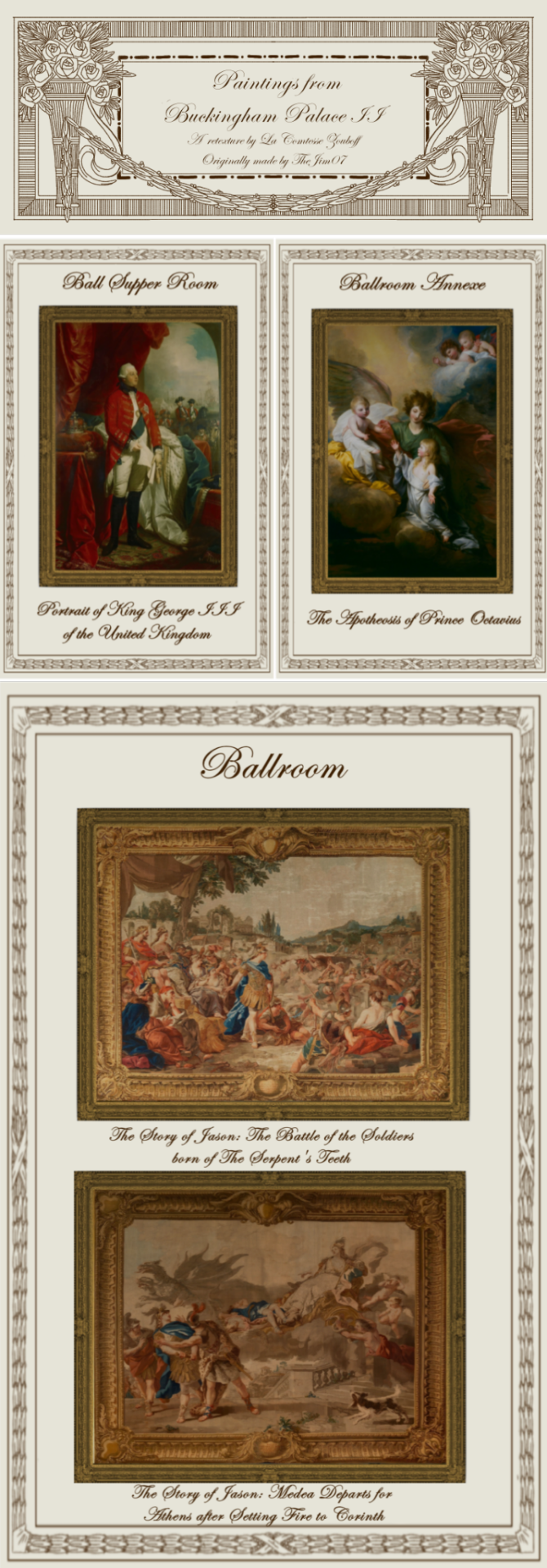
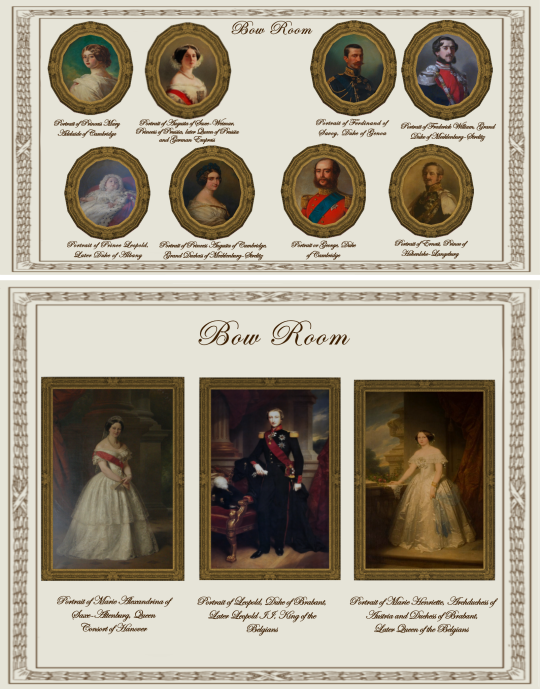
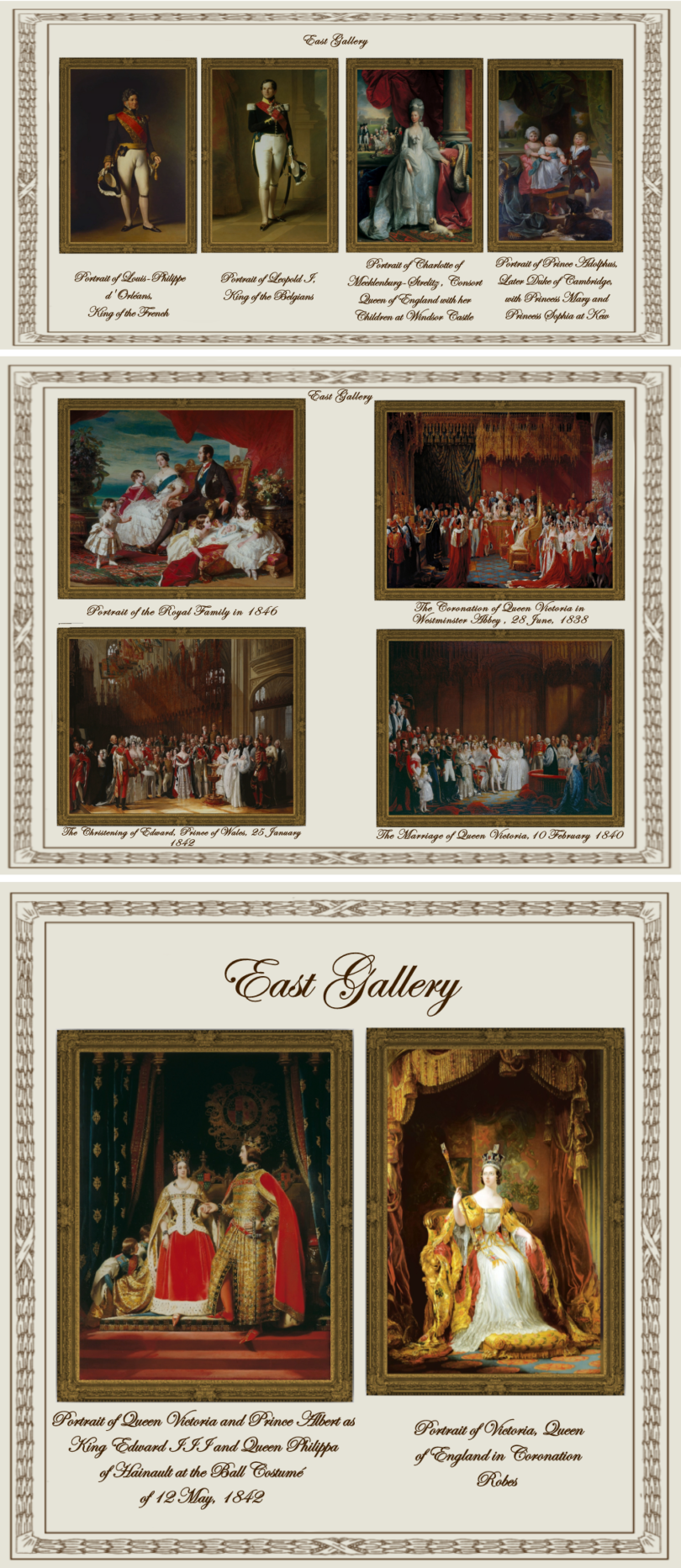
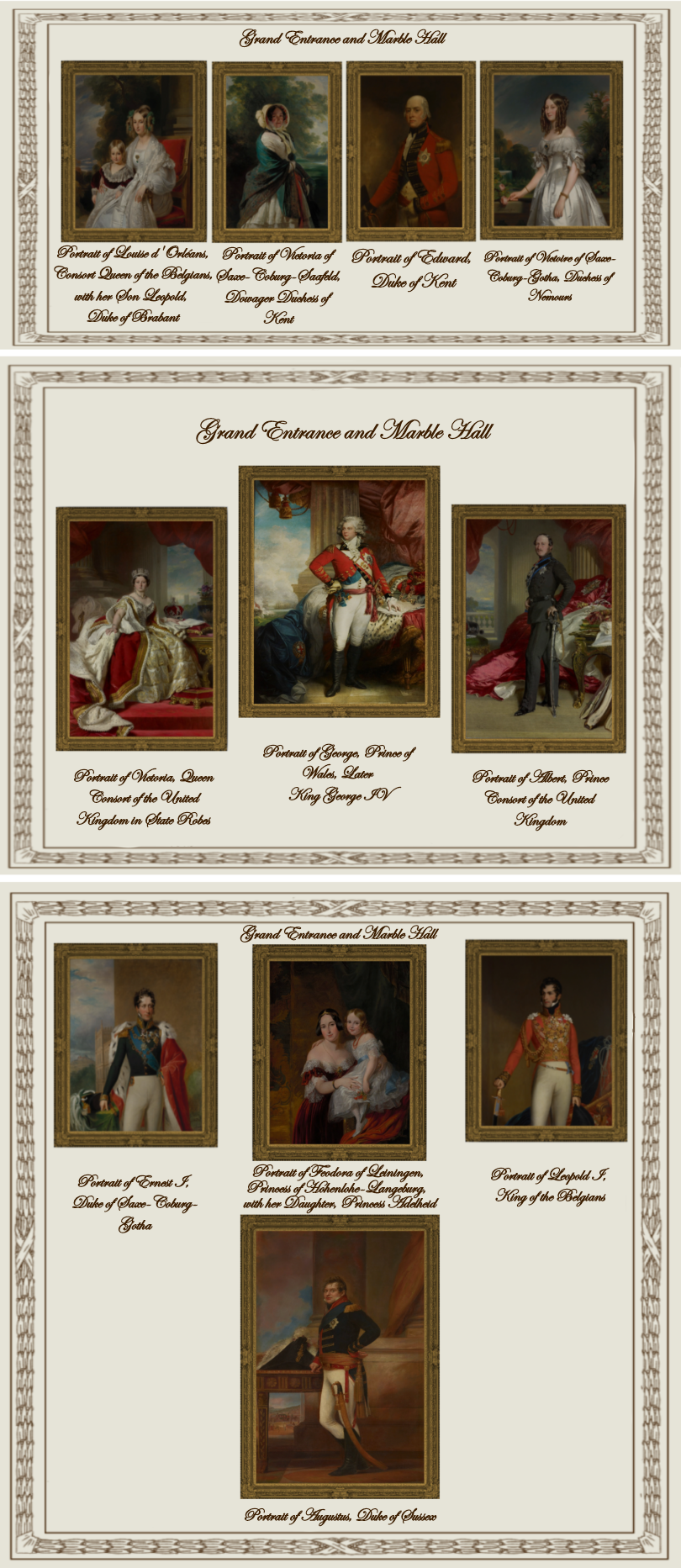

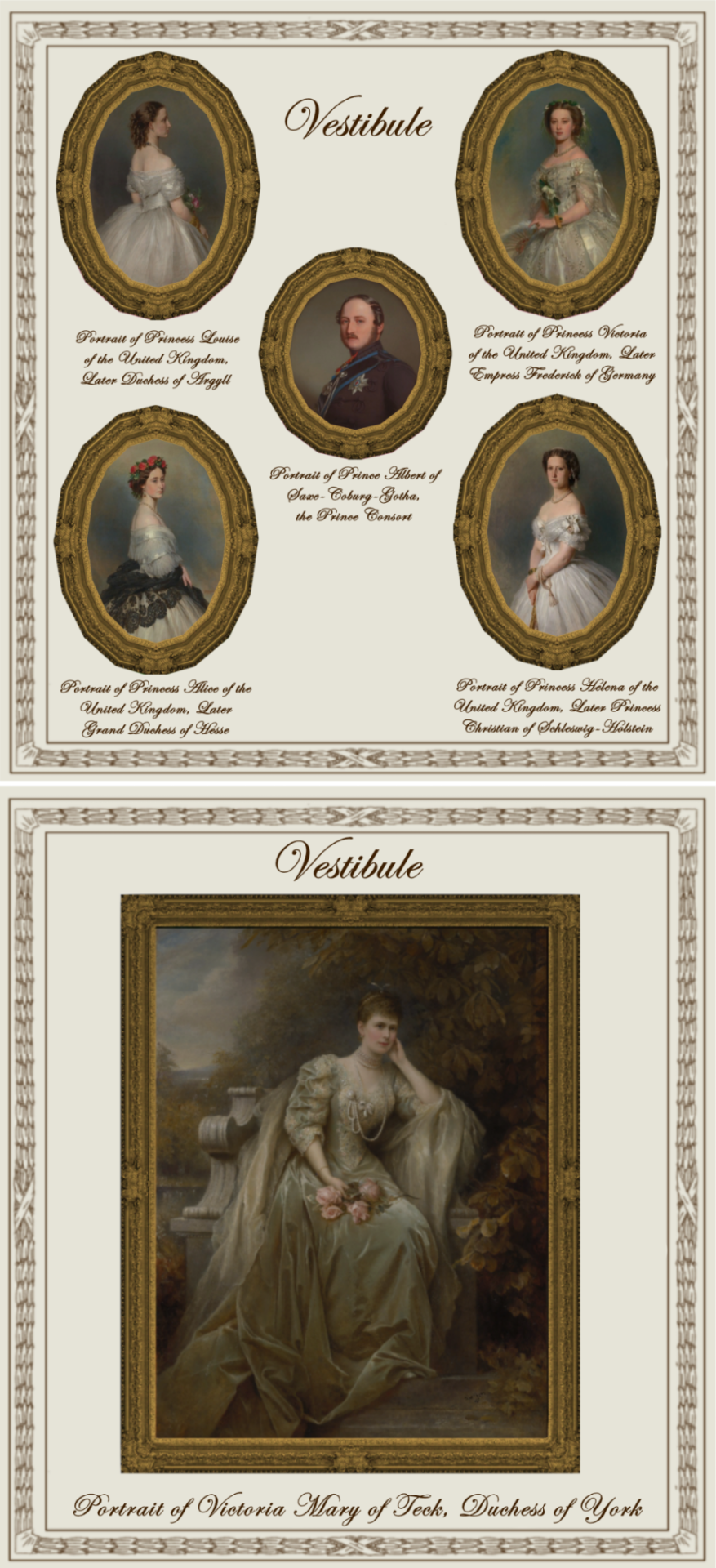
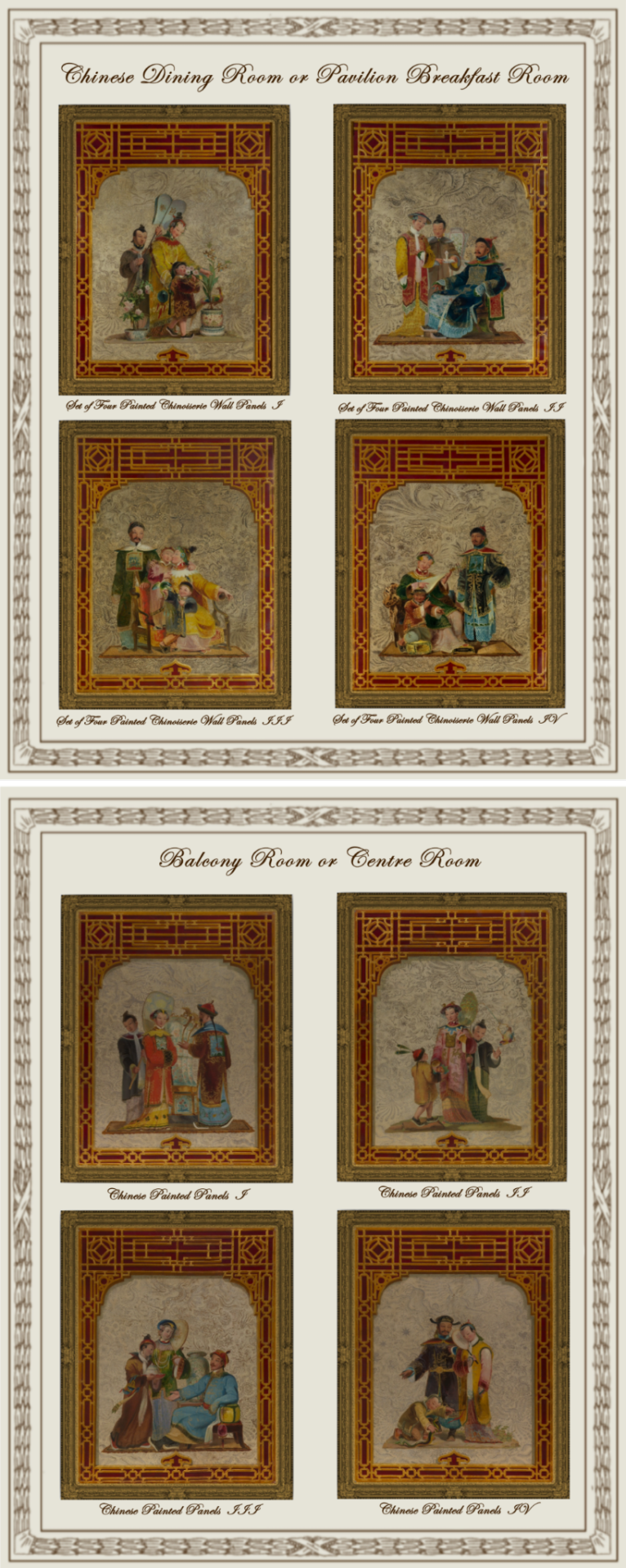

Paintings from Buckingham Palace: part II
A retexture by La Comtesse Zouboff — Original Mesh by @thejim07
Spread among 13 occupied and historic royal residences in the United Kingdom, the collection is owned by King Charles III and overseen by the Royal Collection Trust. The British monarch owns some of the collection in right of the Crown and some as a private individual. It is made up of over one million objects, including 7,000 paintings, over 150,000 works on paper, this including 30,000 watercolours and drawings, and about 450,000 photographs, as well as around 700,000 works of art, including tapestries, furniture, ceramics, textiles, carriages, weapons, armour, jewellery, clocks, musical instruments, tableware, plants, manuscripts, books, and sculptures.
Some of the buildings which house the collection, such as Hampton Court Palace, are open to the public and not lived in by the Royal Family, whilst others, such as Windsor Castle, Kensington Palace and the most remarkable of them, Buckingham Palace are both residences and open to the public.
About 3,000 objects are on loan to museums throughout the world, and many others are lent on a temporary basis to exhibitions.
-------------------------------------------------------
The second part includes paintings displayed in the Ball Supper Room, the Ballroom, the Ballroom Annexe, the Bow Room, the East Gallery, the Grand Entrance and Marble Hall, the Minister's Landing & Staircase, the Vestibule, the Chinese Dining Room and the Balcony Room.
This set contains 57 paintings and tapestries with the original frame swatches, fully recolourable. They are:
Ball Supper Room (BSR):
Portrait of King George III of the United Kingdom (Benjamin West)
Ballroom (BR):
The Story of Jason: The Battle of the Soldiers born of The Serpent's Teeth (the Gobelins)
The Story of Jason: Medea Departs for Athens after Setting Fire to Corinth (the Gobelins)
Ballroom Annexe (BAX):
The Apotheosis of Prince Octavius (Benjamin West)
Bow Room (BWR):
Portrait of Princess Mary Adelaide of Cambridge (William Corden the Younger)
Portrait of Princess Augusta of Cambridge, Grand Duchess of Mecklenburg-Strelitz (Alexander Melville)
Portrait or George, Duke of Cambridge (William Corden the Younger)
Portrait of Frederick William, Grand Duke of Mecklenburg-Strelitz (Franz Xaver Winterhalter)
Portrait of Augusta of Saxe-Weimar, Princess of Prussia, later Queen of Prussia and German Empress (Franz Xaver Winterhalter)
Portrait of Prince Leopold, Later Duke of Albany (Franz Xaver Winterhalter)
Portrait of Ernest, Prince of Hohenlohe-Langeburg (Franz Xaver Winterhalter)
Portrait of Ferdinand of Savoy, Duke of Genoa (Eliseo Sala)
Portrait of Marie Alexandrina of Saxe-Altenburg, Queen Consort of Hanover (Carl Ferdinand Sohn)
Portrait of Leopold, Duke of Brabant, Later Leopold II, King of the Belgians (Nicaise de Keyser)
Portrait of Marie Henriette, Archduchess of Austria and Duchess of Brabant, Later Queen of the Belgians (Nicaise de Keyser)
East Gallery (EG):
Portrait of Leopold I, King of the Belgians (Franz Xaver Winterhalter)
Portrait of Victoria, Queen of England in Coronation Robes (Sir George Hayter)
Portrait of Louis-Philippe d'Orléans, King of the French (Franz Xaver Winterhalter)
Portrait of Charlotte of Mecklenburg-Strelitz, Consort Queen of England with her Children at Windsor Castle (Benjamin West)
Portrait of Prince Adolphus, later Duke of Cambridge, With Princess Mary and Princess Sophia at Kew (Benjamin West)
The Coronation of Queen Victoria in Westminster Abbey, 28 June, 1838. (Sir George Hayter)
The Christening of Edward, Prince of Wales 25 January, 1842 (Sir George Hayter)
The Marriage of Queen Victoria, 10 February, 1840 (Sir George Hayter)
Portrait of the Royal Family in 1846 (Franz Xaver Winterhalter)
Portrait of Queen Victoria and Prince Albert as King Edward III and Queen Philippa of Hainault at the Ball Costumé of 12 May, 1842 (Sir Edwin Landseer)
Grand Entrance and Marble Hall (GEMH):
Portrait of Edward, Duke of Kent (John Hoppner)
Portrait of Ernest I, Duke of Saxe-Coburg-Gotha (George Dawe)
Portrait of Victoria of Saxe-Coburg-Saafeld, Dowager Duchess of Kent (Franz Xaver Winterhalter)
Portrait of Albert, Prince Consort of the United Kingdom (Franz Xaver Winterhalter)
Portrait of Victoria, Queen Consort of the United Kingdom in State Robes (Franz Xaver Winterhalter)
Portrait of Louise d'Orléans, Consort Queen of the Belgians, with her Son Leopold, Duke of Brabant (Franz Xaver Winterhalter)
Portrait of Feodora of Leiningen, Princess of Hohenlohe-Langeburg, with her Daughter, Princess Adelheid (Sir George Hayter)
Portrait of George, Prince of Wales, Later King George IV (Mather Byles Brown)
Portrait of Victoire of Saxe-Coburg-Gotha, Duchess of Nemours (Franz Xaver Winterhalter)
Portrait of Augustus, Duke of Sussex (Domenico Pellegrini)
Portrait of Leopold I, King of the Belgians (William Corden the Younger)
Minister's Landing and Staircase (MLS):
Portrait of George, Prince of Wales in Garther Robes (John Hoppner)
The Loves of the Gods: The Rape of Europa (the Gobelins)
The Loves of the Gods: The Rape of Proserpine (The Gobelins)
Vestibule (VL):
Portrait of Prince Albert of Saxe-Coburg-Gotha, the Prince Consort (Unknown Artist from the German School)
Portrait of Princess Alice of the United Kingdom, Later Grand Duchess of Hesse (Franz Xaver Winterhalter)
Portrait of Princess Helena of the United Kingdom, Later Princess Christian of Schleswig-Holstein (Franz Xaver Winterhalter)
Portrait of Princess Louise of the United Kingdom, Later Duchess of Argyll (Franz Xaver Winterhalter)
Portrait of Princess Victoria of the United Kingdom, Later Empress Frederick of Germany (Franz Xaver Winterhalter)
Portrait of Victoria Mary of Teck, Duchess of York (Edward Hughes)
Chinese Dining Room or Pavilion Breakfast Room(CDR):
Set of Four Painted Chinoiserie Wall panels I (Robert Jones)
Set of Four Painted Chinoiserie Wall panels II (Robert Jones)
Set of Four Painted Chinoiserie Wall panels III (Robert Jones)
Set of Four Painted Chinoiserie Wall panels IV (Robert Jones)
Balcony Room or Centre Room (BR):
Chinoiserie Painted Panel I (Robert Jones)
Chinoiserie Painted Panel II (Robert Jones)
Chinoiserie Painted Panel III (Robert Jones)
Chinoiserie Painted Panel IV (Robert Jones)
EXTRAS! (E):
I decided to add the rest of the tapestries from the story of Jason (wich hangs in the Grand Reception Room at Windsor Castle) and (with Jim's permission) added the original mesh for paintings number 2,3,4 & 5 from the Vestibule (seen here and here) wich was never published. These items are:
The Story of Jason: Jason Pledges his Faith to Medea (the Gobelins)
The Story of Jason: Jason Marries Glauce, Daughter of Creon, King of Thebes (the Gobelins)
The Story of Jason: The Capture of the Golden Fleece (the Gobelins)
The Story of Jason: The Poisoning of Glauce and Creon by Medea's Magic Robe (the Gobelins)
Sea Melodies (Herbert James Draper) (made by TheJim07)
-------------------------------------------------------
Found under decor > paintings for:
500§ (BWR: 1,2,3,4,5,6, & 8 |VL: 1)
570§ (VL: 2,3,4 & 5 |E: 5)
1850§ (GEMH: 1 & 3)
2090§ (GEMH: 2,6,7, 9 & 11)
3560§ (GEMH: 4,5 & 10 |BSR: 1 |EG: 1,2,3,4 & 5 |MLS: 1 |BAX: 1)
3900§ (CDR: 1,2,3 & 4 |BR: 1,2,3 & 4 |EG: 10 |VL: 6 |GEMH: 8)
4470§ (MLS: 2 |E: 1)
6520§ (BR 1 & 2| MLS: 3 |EG: 6,7,8 & 9 |BR: 1 & 2 |E: 2,3 & 4)
Retextured from:
"Saint Mary Magdalene" (BWR: 1,2,3,4,5,6, & 8 |VL: 1) found here.
"Sea Melodies" (VL: 2,3,4 & 5 |E: 5)
"The virgin of the Rosary" (GEMH: 1 & 3) found here.
"Length Portrait of Mrs.D" (GEMH: 4,5 & 10 |BSR: 1 |EG: 1,2,3,4 & 5 |MLS: 1 |BAX: 1) found here
"Portrait of Maria Theresa of Austria and her Son, le Grand Dauphin" (CDR: 1,2,3 & 4 |BR: 1,2,3 & 4 |EG: 10 |VL: 6 |GEMH: 8) found here
"Sacrifice to Jupiter" (MLS: 2 |E: 1) found here
"Vulcan's Forge" (BR 1 & 2| MLS: 3 |EG: 6,7,8 & 9 |BR: 1 & 2 |E: 2,3 & 4) found here
(you can just search for "Buckingham Palace" using the catalog search mod to find the entire set much easier!)
Disclaimer!
Some paintings in the previews look blurry but in the game they're very high definition, it's just because I had to add multiple preview pictures in one picture to be able to upload them all! Also sizes shown in previews are not accurate to the objects' actual sizes in most cases.

Drive
(Sims3pack | Package)
(Useful tags below)
@joojconverts @ts3history @ts3historicalccfinds @deniisu-sims @katsujiiccfinds @gifappels-stuff
-------------------------------------------------------
#the sims 3#ts3#sims 3#s3cc#sims 3 cc#sims 3 download#sims 3 decor#edwardian#victorian#regency#georgian#buckingham#buckingham palace#wall decor#sims 3 free cc#large pack#this was exhausting
104 notes
·
View notes
Note
Why do economists need to shut up about mercantilism, as you alluded to in your post about Louis XIV's chief ministers?
In part due to their supposed intellectual descent from Adam Smith and the other classical economists, contemporary economists are pretty uniformly hostile to mercantilism, seeing it as a wrong-headed political economy that held back human progress until it was replaced by that best of all ideas: capitalism.

As a student of economic history and the history of political economy, I find that economists generally have a pretty poor understanding of what mercantilists actually believed and what economic policies they actually supported. In reality, a lot of the things that economists see as key advances in the creation of capitalism - the invention of the joint-stock company, the creation of financial markets, etc. - were all accomplishments of mercantiism.
Rather than the crude stereotype of mercantilists as a bunch of monetary weirdos who thought the secret to prosperity was the hoarding of precious metals, mercantilists were actually lazer-focused on economic development. The whole business about trying to achieve a positive balance of trade and financial liquidity and restraining wages was all a means to an end of economic development. Trade surpluses could be invested in manufacturing and shipping, gold reserves played an important role in deepening capital pools and thus increasing levels of investment at lower interest rates that could support larger-scale and more capital intensive enterprises, and so forth.
Indeed, the arch-sin of mercantilism in the eyes of classical and contemporary economists, their interference in free trade through tariffs, monopolies, and other interventions, was all directed at the overriding economic goal of climbing the value-added ladder.
Thus, England (and later Britain) put a tariff on foreign textiles and an export tax on raw wool and forbade the emigration of skilled workers (while supporting the immigration of skilled workers to England) and other mercantilist policies to move up from being exporters of raw wool (which meant that most of the profits from the higher value-added part of the industry went to Burgundy) to being exporters of cheap wool cloth to being exporters of more advanced textiles. Hell, even Adam Smith saw the logic of the Navigation Acts!

And this is what brings me to the most devastating critique of the standard economist narrative about mercantilism: the majority of the countries that successfully industrialized did so using mercantilist principles rather than laissez-faire principles:
When England became the first industrial economy, it did so under strict protectionist policies and only converted to free trade once it had gained enough of a technological and economic advantage over its competitors that it didn't need protectionism any more.
When the United States industrialized in the 19th century and transformed itself into the largest economy in the world, it did so from behind high tariff walls.
When Germany made itself the leading industrial power on the Continent, it did so by rejecting English free trade economics and having the state invest heavily in coal, steel, and railroads. Free trade was only for within the Zollverein, not with the outside world.
And as Dani Rodrik, Ha-Joon Chang, and others have pointed out, you see the same thing with Japan, South Korea, China...everywhere you look, you see protectionism as the means of achieving economic development, and then free trade only working for already-developed economies.
#political economy#mercantilism#economic development#early modern state-building#early modern period#laissez-faire#classical liberalism#classical economics#economics#economic history
68 notes
·
View notes
Text
Today, I want to discuss one of the most influential yet controversial figures in fashion history—Coco Chanel. Known for revolutionizing women's fashion with timeless elegance, Chanel built an empire that continues to define luxury and sophistication. However, beyond her groundbreaking designs and iconic creations, her legacy has a darker side.
Coco Chanel, born Gabrielle Bonheur Chanel on August 19, 1883, in Saumur, France, is one of the most iconic figures in the history of fashion. Her journey from humble beginnings to becoming a global fashion icon is a story of resilience, creativity, and ambition. However, her life is also marked by controversy, particularly her alleged involvement with the Nazi regime during World War II.
Chanel's early life was far from glamorous. After her mother's death, her father abandoned her and her siblings, leaving them in the care of nuns at the Aubazine orphanage. It was here that Chanel learned to sew, a skill that would later become the foundation of her career. At 18, she left the orphanage and worked as a seamstress while also performing as a cabaret singer, where she earned the nickname "Coco."
Chanel's life took a turn when she met Étienne Balsan, a wealthy textile heir, who introduced her to the world of luxury and high society. Through Balsan, she met Arthur "Boy" Capel, a British businessman who became her lover and financial backer. With Capel's support, Chanel opened her first boutique in Paris in 1910, specializing in hats. By 1913, she had expanded into clothing, revolutionizing women's fashion with her simple, elegant designs that rejected the corseted, ornate styles of the time.
Chanel's designs, characterized by their comfort and practicality, resonated with the modern woman. She introduced the little black dress, the Chanel suit, and the iconic Chanel No. 5 perfume, which became symbols of timeless elegance. By the 1920s, Chanel was a household name, and her influence on fashion was unparalleled.
Despite her immense success, Chanel's legacy is tarnished by her alleged collaboration with the Nazi regime during World War II. In the 1930s, Chanel began a relationship with Hans Günther von Dincklage, a German military officer and Nazi spy, who played a significant role in securing her privileges under the German occupation of France. When France fell to the Nazis in 1940, Chanel closed her fashion house and took residence at the Ritz Hotel in Paris, where many high-ranking German officers, including Hermann Göring and Joseph Goebbels, also lived.
Beyond her romantic involvement with von Dincklage, Chanel became entangled in Nazi espionage efforts. She was recruited as an agent for the German military intelligence, the Abwehr, under the codename "F-7124". Her most infamous mission was Operation Modellhut, a Nazi intelligence scheme that sought to use Chanel’s social connections to establish backchannel negotiations with British Prime Minister Winston Churchill. Chanel, who had long-standing ties to Churchill and other British elites, was considered a valuable intermediary. In 1943, she traveled to Madrid, accompanied by Baron Louis de Vaufreland, another Abwehr agent, in an attempt to deliver a peace proposal to Churchill through British diplomatic contacts. The mission ultimately failed.
Chanel’s involvement with Nazi intelligence went even deeper. She traveled to Berlin in 1943 to personally offer her services to Heinrich Himmler, the head of the SS. Following their meeting, she was tasked with another espionage mission in Spain, where she attempted to leverage her friendship with British aristocrat Vera Bate Lombardi to gain intelligence. However, her efforts were unsuccessful, and as the war turned against Germany, Chanel sought to distance herself from the Nazis.
In August 1944, after the liberation of Paris, Chanel was arrested and interrogated by French authorities for her wartime activities. However, due to her close ties with Winston Churchill, she was released without facing any charges. To escape scrutiny, Chanel fled to Switzerland, where she remained in exile for several years before staging a remarkable comeback in the fashion industry in 1954.
After the war, Chanel faced public backlash, and her reputation in France was severely damaged. She moved to Switzerland, where she lived in relative obscurity for several years. However, in 1954, at the age of 71, Chanel made a triumphant return to the fashion world, reintroducing her iconic designs to a new generation. Her comeback was a success, and she continued to lead her fashion house until her death on January 10, 1971. -- References: Vaughan, H. (2011). Sleeping with the Enemy: Coco Chanel's Secret War. Vintage Books. Cattani, G., Colucci, M., & Ferriani, S. (2023). From the Margins to the Core of Haute Couture: The Entrepreneurial Journey of Coco Chanel. Enterprise & Society, 24(2), 546–588. https://doi.org/10.1017/eso.2021.58 Richards, A. (2023). The true story of Coco Chanel's childhood: In search of Gabrielle. BBC Article.

Winston Churchill and Coco Chanel (C) at a meet of the Duke of Westminster’s boar hounds, the ‘Mimizan Hunt’ near Dampierre, northern France, 1928.
8 notes
·
View notes
Text
Today, Her Royal Highness The Princess Royal and Vice Admiral Sir Timothy Laurence arrived in Colombo, Sri Lanka.
Day 1: Colombo
🌺 At a Welcome Ceremony at Bandaranaike International Airport, Her Royal Highness was received by dignitaries including the British High Commissioner to the Democratic Socialist Republic of Sri Lanka, His Excellency Mr. Andrew Patrick and Minister of Foreign Affairs of Sri Lanka, His Excellency Mr. Ali Sabry.
🧵 The Princess’s first visited the MAS Active Factory, one of the largest apparel tech companies in South Asia to be identified by the UK Fashion and Textile Association (UKFT) as an important Sri Lankan partner.
👚 As President of the UKFT, Her Royal Highness had an opportunity to meet staff and tour the facility to hear more about their innovative designs and partnerships with UK brands.
🎂 Next, Her Royal Highness visited Save The Children Sri Lanka’s Head Office in Colombo. This year marks 50 years of Save The Children working in Sri Lanka.
💗 The Princess had an opportunity to hear about some of the programmes the charity has provided, which have contributed to humanitarian and development needs across the country, including in education, health and nutrition and vocational skills development.
👧 As Patron of Save The Children UK, Her Royal Highness unveiled a plaque commemorating the 50th Anniversary of Save The Children working in Sri Lanka.
🏥 Following this, The Princess Royal visited Lady Ridgeway Hospital for Children to see Save The Children’s Social Emotional Learning Tool Kit Programme, Tilli, in action.
📚 Her Royal Highness met hospital staff who are implanting the Tilli programme which is a play-based, Social-Emotional Learning tool kit that incorporates evidence-based interventions such as games and story-telling to assist parents and teachers in facilitating meaningful child-friendly discussions with children on topics such as trust, consent, bodies and boundaries.
🇱🇰 The Princess Royal previously visited Sri Lanka in March 1995 with Save The Children to learn more about their projects in the country.
Video from Royal Family Instagram story | Posted 10th January 2024
65 notes
·
View notes
Text
The Princess Royal and Vice Admiral Sir Timothy Laurence arrived in Colombo, Sri Lanka.
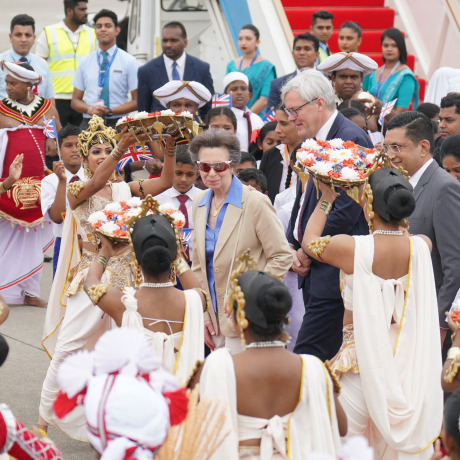
Day 1: Colombo
At a Welcome Ceremony at Bandaranaike International Airport, Her Royal Highness was received by dignitaries including the British High Commissioner to the Democratic Socialist Republic of Sri Lanka, His Excellency Mr. Andrew Patrick and Minister of Foreign Affairs of Sri Lanka, His Excellency Mr. Ali Sabry.
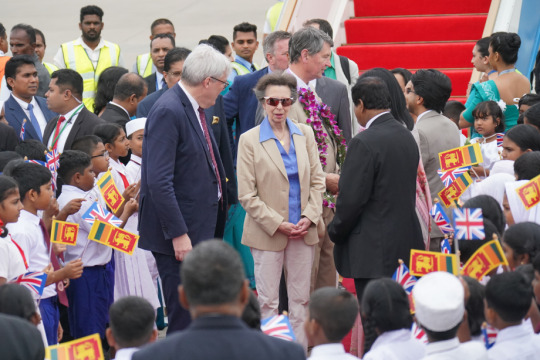
The Princess’s first visited the MAS Active Factory, one of the largest apparel tech companies in South Asia to be identified by the UK Fashion and Textile Association (UKFT) as an important Sri Lankan partner.
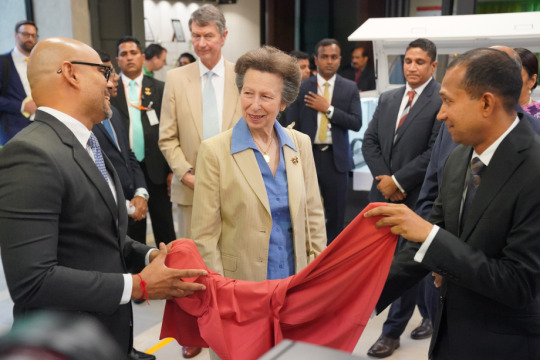
As President of the UKFT, Her Royal Highness had an opportunity to meet staff and tour the facility to hear more about their innovative designs and partnerships with UK brands.
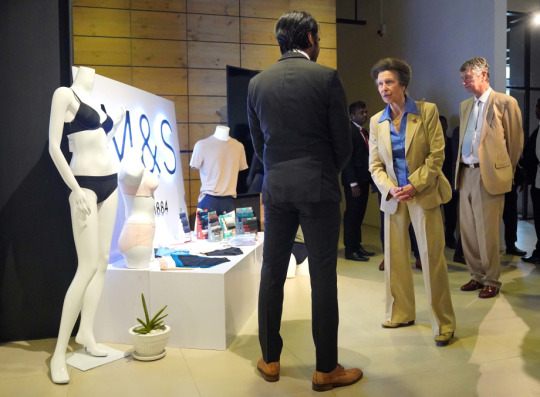
Next, Her Royal Highness visited Save The Children Sri Lanka’s Head Office in Colombo. This year marks 50 years of Save The Children working in Sri Lanka.
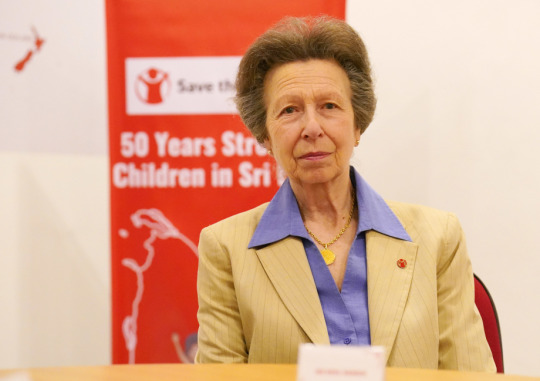
The Princess had an opportunity to hear about some of the programmes the charity has provided, which have contributed to humanitarian and development needs across the country, including in education, health and nutrition and vocational skills development.
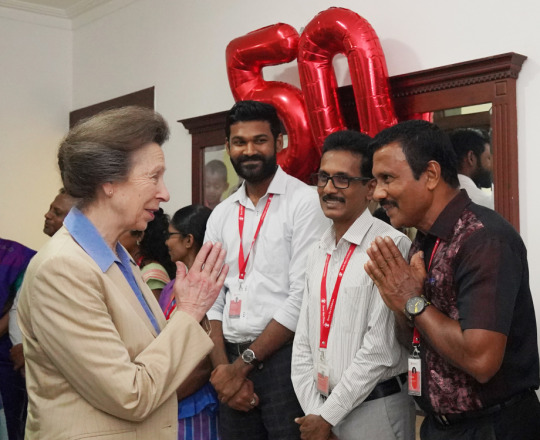
As Patron of Save The Children UK, Her Royal Highness unveiled a plaque commemorating the 50th Anniversary of Save The Children working in Sri Lanka.
Following this, The Princess Royal visited Lady Ridgeway Hospital for Children to see Save The Children’s Social Emotional Learning Tool Kit Programme, Tilli, in action.
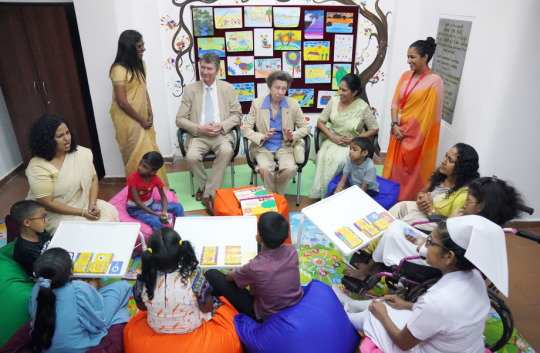
Her Royal Highness met hospital staff who are implanting the Tilli programme which is a play-based, Social-Emotional Learning tool kit that incorporates evidence-based interventions such as games and story-telling to assist parents and teachers in facilitating meaningful child-friendly discussions with children on topics such as trust, consent, bodies and boundaries.
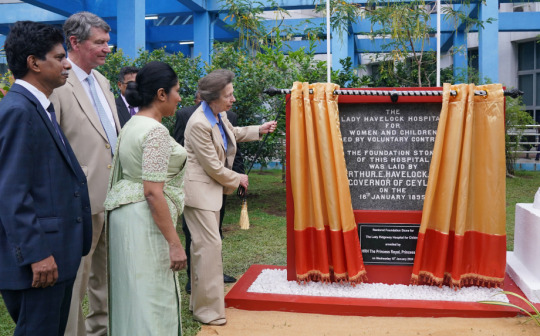
The Princess Royal previously visited Sri Lanka in March 1995 with Save The Children to learn more about their projects in the country.
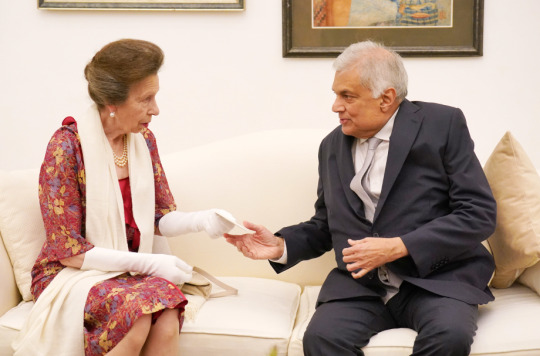
The Princess Royal delivered a message from The King to the President and First Lady of Sri Lanka this evening.
© Royal UK
#BUSY PRINCESS#princess anne#princess royal#tim laurence#timothy laurence#workanne#brf#british royal family
63 notes
·
View notes
Text
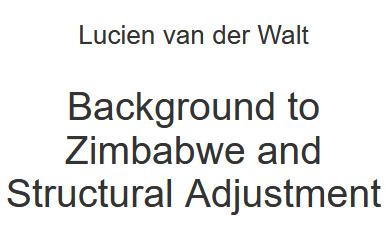
The organised working class flexes its muscles
One of the ironies of ESAP was that it increased freedom for trade unions. The power of the Minister of Labour to set wages was removed, allowing unions to become involved in wage negotiations once more.
However, the Minister retained the power to veto wage agreements and the public sector remained officially off-limits to collective bargaining. But this did not stop public sector workers, facing a wage freeze and mass retrenchments, from unionising. In August 1996, nurses, teachers and other public sector workers held a four-week general strike for a higher wages.
When government failed to respond adequately to workers demands, nurses and doctors went on strike in late October 1996. Despite police attacks on crowds, threats of dismissal and an initial refusal of the State to negotiate, the health workers stood their ground for two months, and were joined by teachers.
In November 1996, the ZCTU tried to launch a two-day general strike in solidarity with the public sector workers. In 1997, the government backed down, awarding public sector workers a wage increase of 36 %. After the 1996 strikes, closer ties were forged between the ZCTU and the Public Servants Association.
In July 1997, a strike wave engulfed security companies, hotels, restaurants, construction, banks, cement and lime, railways and textiles. Postal workers embarked on a go-slow. In many cases, workers were demanding wage increases of 40%. In October 1997, labour unrest spread to the commercial farms, as workers organised by the ZCTU launched two weeks of work stoppages and road blockades. The demand was for a 135 % wage increase.
#Zimbabwe#Zimbabwean politics#history#neoliberalism#africa#african politics#anarchism#anarchy#anarchist society#geopolitics#resistance#autonomy#revolution#communism#anti capitalist#anti capitalism#late stage capitalism#daily posts#libraries#leftism#social issues#economics#economy#anarchy works#anarchist library#survival#freedom
2 notes
·
View notes
Text
South Africa's President Cyril Ramaphosa has opposed what he calls the "unilateral" higher trade tariffs imposed on his country by the US.
US President Donald Trump announced on Monday that he would subject imports from South Africa to a new 30% tariff from 1 August.
It is the only country from sub-Saharan Africa that Trump singled out in his announcement, reflecting his strained relationship with Ramaphosa's government.
In a letter to Ramaphosa, Trump said South Africa's trade relationship with the US "has been, unfortunately, far from reciprocal". In his response, Ramaphosa maintained the 30% tariff "is not an accurate representation of available trade data".
Trump's decision is a huge blow to South Africa. The US is its second-biggest trading partner, and South Africa's automobile, farming and textile sectors had duty-free access to the US market under the African Growth and Opportunity Act (Agoa).
South Africa's Agriculture Minister John Steenhuisen said that while Trump was not explicit, his announcement suggested the end of Agoa.
"More than ever, it highlights the need for urgent reform in South Africa so we can ensure our economy meets the requirements of our trading partners around the world," Steenhuisen said in parliament.
Trump sent letters to South Africa and 13 other countries, informing them of his latest tariff plans.
The US president said the rates could be modified "upward or downward, depending on our relationship with your country".
"We have had years to discuss our trading relationship with South Africa, and have concluded that we must move away from these long-term, and very persistent, trade deficits engendered by South Africa's tariff, and non-tariff, policies and trade barriers," Trump said in his letter.
"Starting on August 1, 2025, we will charge South Africa a tariff of only 30% on any and all South African products sent to the United States, separate from all sectoral tariffs," he added.
Trump said that if South Africa were to increase its tariffs in response to his announcement, the amount it chooses to raise them by would be added on top of the existing 30%.
"If you wish to open your heretofore closed trading markets to the United States, and eliminate your tariff and non-tariff policies and trade barriers, we will, perhaps, consider an adjustment to this letter."
In response, Ramaphosa contested the new tariffs, saying the issue was still under consideration by negotiating teams from South Africa and the US.
"This 30% tariff is based on a particular interpretation of the balance of trade between South Africa and the United States," Ramaphosa said in a statement.
He added that more than half of the goods South Africa imported from the US were not taxed, and the average tariff on the rest was 7.6%
He said South Africa would continue with its diplomatic efforts to ensure a "more balanced and mutually beneficial trade relationship" with the US.
In April, Trump imposed a 30% tariff on South Africa, as part of his global "reciprocal" tariffs, before agreeing to suspend their implementation for 90 days.
Higher tariffs had been set to come into effect on 9 July, having previously been suspended, with White House officials saying they would look to strike trade deals.
When asked by a reporter whether the new August date was a hard deadline, Trump said: "I would say firm, but not 100% firm. If they call up and they say we'd like to do something a different way, we're going to be open to that."
South Africa and other countries around the continent have been pushing to negotiate trade deals with the US to prevent Trump's sweeping tariffs.
Trump argues that introducing tariffs will protect American businesses from foreign competition and also boost domestic manufacturing and jobs.
US-South Africa relations hit rock-bottom after Trump took office in January.
The US president has stopped all aid to South Africa, accusing it of discriminating against the white minority. South Africa has repeatedly denied this.
Ramaphosa held talks with Trump in May in a bid to mend relations.
However, Trump confronted him with a series of contested claims about the killing of white farmers, and his latest announcement suggests that he is keeping up the pressure on South Africa.
4 notes
·
View notes